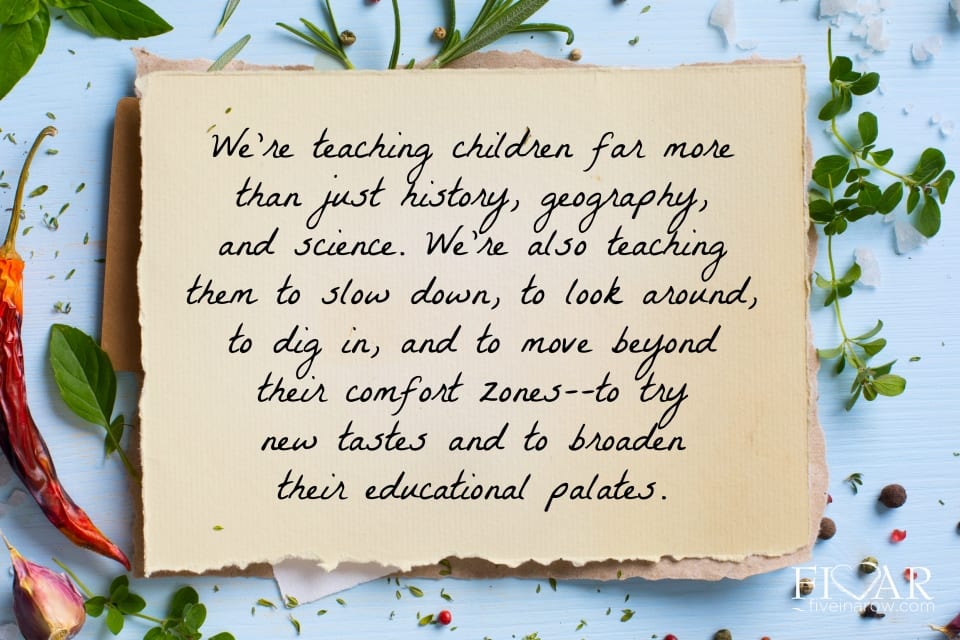From time to time I’ll hear a mother say that her child just isn’t interested in a story or her child was whining by the second or third day and didn’t want to read the book again. And sometimes a book simply will NOT connect with a child for some unknown reason. BUT . . . we live in a very, very, VERY different world than when I was five years old more than 60 years ago.
And that’s not necessarily good.
Many children today have little or no attention spans, having been anesthetized with a relentless flow of electronic entertainment. Simple illustrations and simple stories may not be the first choice of children who’ve grown accustomed to never-ending sensory overload.
One of the many beautiful attributes of FIAR is to slow children down and cause them to begin to look beyond the mind-numbing, speed-of-light entertainment they’ve grown accustomed to viewing. I liken this to children (and, unfortunately, some adults) who are addicted to desserts or to bread and pasta but have no interest vegetables.
As parents, our job is to broaden our children’s palates and introduce them to a rich (and nourishing) variety of vegetables and foreign cuisines that may feel strange to tongues grown accustomed to steady diets of chicken nuggets, mac ‘n cheese, and french fries. We do them a grave disservice to allow the children to dictate the dinner menu night after night with their immature taste buds. In the same way, by skillfully peeling back layer after layer of a FIAR story, we allow children to taste a rich and varied educational diet.
Learning to become effective teachers isn’t a skill quickly learned, nor is it a skill taught in university education departments today. It takes faith, persistence, and a willingness to keep trying even when a student whines. By patiently bringing students back to an award-winning book, we begin to negate the insistent need for more stimulation and instead begin to teach them to dig deeper and to look more closely–which is WHAT education is about. Even the dullest child (or adult) can give a cursory glance at Tom Sawyer or the Mona Lisa or the U.S. Constitution and move on quickly to something else. We want our students to desire to dig deeper in order to discover what past generations have found so remarkable.
I don’t mean this as a lecture but rather as an encouragement. Teaching badly is easy. Teaching effectively is much more difficult, but don’t forget that you’ve chosen an award-winning curriculum that has successfully guided nearly 100,000 mothers and more than 250,000 children over the past twenty-plus years for a reason. It’s effective. It works. It’s all there on the pages of the manual if you’ll press in and not grow weary.
We’re teaching children far more than just history, geography, and science. We’re also teaching them to slow down, to look around, to dig in, and to move beyond their comfort zones–to try new tastes and to broaden their educational palates. Don’t give up. And always make sure that as the teacher, you set the agenda. We should no more allow a child to select the educational menu than we would allow them to choose the family meal menu. Becoming a great teacher isn’t easy, but it’s a learnable skill; and the dividends it pays are almost too great to imagine. Be patient. Give yourself permission to fail. Don’t give up. You can do this!




 How to Teach so a Child Falls in Love with Learning
How to Teach so a Child Falls in Love with Learning
This is a very informative and educative topic and sheds light on one of the most overlooked issues “Child Education”. I believe all children must be provided with the best preschool education irrespective of their social class. I have seen montessori school San Marcos
implementing a play-learn kind of a teaching environment which enhances the child’s cognitive thinking ability and decision making skills. Every early education institute should acquire such methodology!